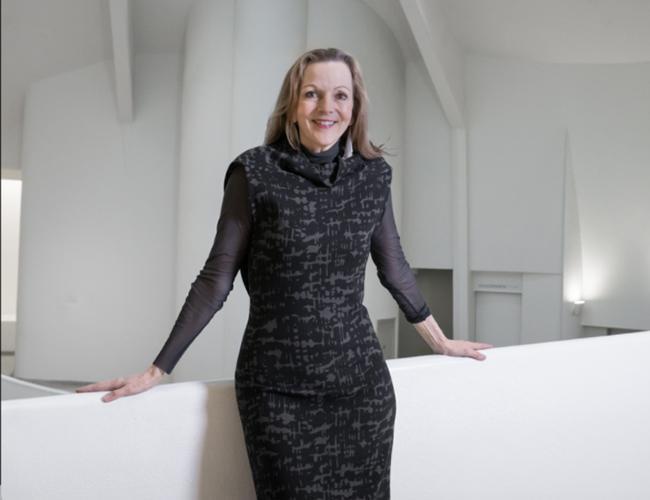
A generation of artists deeply marked by the Tiananmen Square massacre, globalization and the liberalization of China’s economy is at the heart of a new exhibition at New York’s Solomon R. Guggenheim Museum.
The period bookended by Tiananmen (1989) and the 2008 Beijing Olympics witnessed what the museum’s senior curator for Asian art Alexandra Munroe called “the greatest transformations in the lives of 1.3 billion people ever experienced in such a short span in all reported human history.”
Radical socioeconomic and geopolitical changes experienced in such a short period of time could only be brutal.
“Art and China after 1989: Theater of the World,” which opened on Oct. 6 and runs until Jan. 7, “helps us understand the human impact of those changes,” Munroe said, insisting it was not a comprehensive survey of Chinese contemporary art.
She organized the show along with Chinese contemporary art experts Philip Tinari of the Ullens Center for Contemporary Art in Beijing and Hou Hanru, artistic director of Rome’s MAXXI museum.
What the 71 featured artists and collectives filling most of the museum and its spiral structure “show us about their society and about ours is not always pretty,” noted museum director Richard Armstrong.
Many of the works have express political messages in the face of an authoritarian regime, created by artists often living and working outside of China.
Liu Zheng’s poignant photographic prints show Chinese people on the margins of the race to economic development, while Wu Shanzhuan’s “Today No Water” series plays with the bureaucratic language of state communications.
The most spectacular work is Chen Zhen’s giant “Precipitous Parturition,” a dragon hung above the museum’s rotunda whose body is made of intricately women bicycle inner tubes with toy cars inside, reflecting China’s transformation from a nation of bicycles to a nation of cars.
But “it would be a misunderstanding of this exhibition to see it solely through the lens of politics,” Munroe stressed.
“It’s the lens of life, chaos, globalization, neoliberalism.”
The show also explores the West’s view of China and its art, the influence of man on his environment and the presence of a looming nuclear threat.
But long before the opening, three of the pieces due to be shown sparked waves of protests - both in public and on social media. Ultimately and suddenly, the museum pulled the works citing unspecified “explicit and repeated threats of violence” to its staff.
But the decision also cut short an opportunity for public debate about morality and contemporary art.
Huang Yong Ping’s “Theater of the World” - an enclosure of insects and reptiles vying for dominance -- was installed without live creatures.
During a September interview with Artnet, Munroe had bluntly suggested that “if you can’t survive” the piece, “don’t bother seeing the rest of the show.”
A video featuring two pigs mating - their bodies temporarily tattooed by Xu Bing with Chinese characters and Roman letters -- was pulled, along with another by Sun Yuan and Peng Yu showing dogs trained to fight instead strapped to treadmills facing each other in pairs in a fruitless struggle.